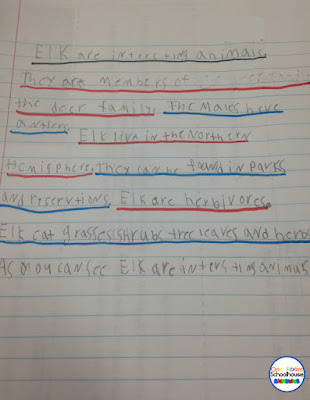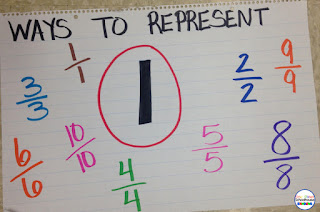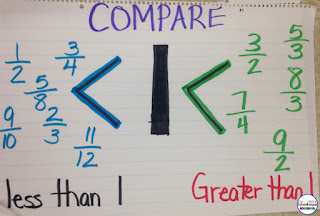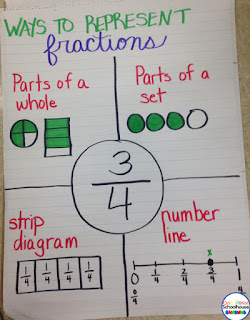Do your students struggle with expository writing? It's hard for students because they often lack the background knowledge necessary.
We read through the notes together. Then we decide what information we can use as a detail. We underline that information with red. Then we look for facts that give more information/examples. We underline that fact in blue. We find at least 3 sets of facts that can be used as a detail/example. Once we have the "meat" of our paper underlined, we start writing.
Since we are just beginning to write, I have taught my students a very generic topic sentence. I tell them it's a generic topic. It will get the job done, but it has lots of room for improvement. We use the sentence frame: _____ are interesting animals.
After students write their topic, we look at the first pair of facts we underlined. We make them both into complete sentences. We do the same with the remaining details/examples we identified. Then, we write a conclusion. For right now, we are using a generic conclusion. As you can see, _____ (restate the topic).
As students write, I ask them to underline the topic and conclusion in black, details in red, and examples in blue.
Here's an example from 2 different students. The top example is from a student who worked with me in a small group and needed lots of support. The second example is from a student who wrote the entire paragraph by himself after we discussed details/examples from the notes.
If you are interested in using notes for expository writing, you can find set 1 here.

I created this set of notes for my students. Each page is a different animal. Notes are written in fragments.
Here is an example of what a note sheet looks like. I project this on my smart board so everyone can see it. I also give students their own copy.
We read through the notes together. Then we decide what information we can use as a detail. We underline that information with red. Then we look for facts that give more information/examples. We underline that fact in blue. We find at least 3 sets of facts that can be used as a detail/example. Once we have the "meat" of our paper underlined, we start writing.
Since we are just beginning to write, I have taught my students a very generic topic sentence. I tell them it's a generic topic. It will get the job done, but it has lots of room for improvement. We use the sentence frame: _____ are interesting animals.
After students write their topic, we look at the first pair of facts we underlined. We make them both into complete sentences. We do the same with the remaining details/examples we identified. Then, we write a conclusion. For right now, we are using a generic conclusion. As you can see, _____ (restate the topic).
As students write, I ask them to underline the topic and conclusion in black, details in red, and examples in blue.
Here's an example from 2 different students. The top example is from a student who worked with me in a small group and needed lots of support. The second example is from a student who wrote the entire paragraph by himself after we discussed details/examples from the notes.
If you are interested in using notes for expository writing, you can find set 1 here.










